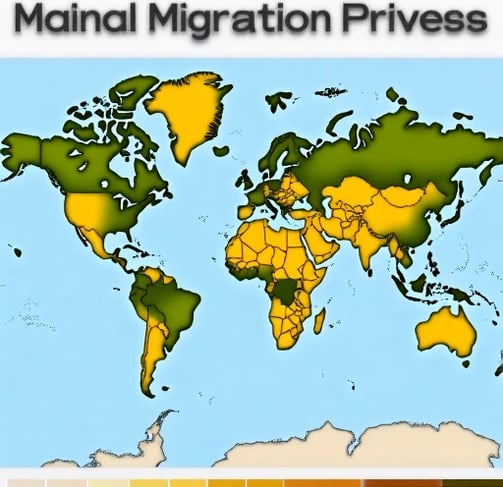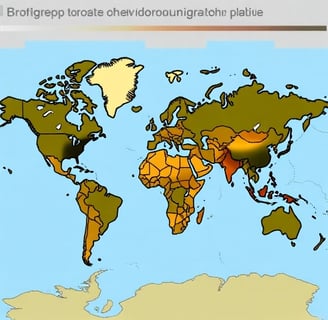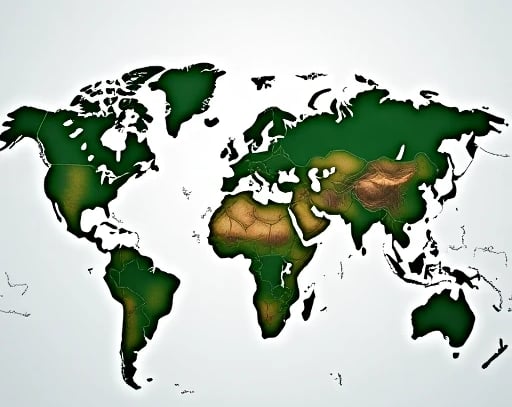BRITTNEYNORTON
I am BRITTNEY NORTON, an interdisciplinary computational ecologist and AI researcher pioneering the integration of biogeographic principles into machine learning model transfer strategies. With a Ph.D. in Spatial Ecology and Machine Learning (University of Cambridge, 2021) and a Postdoctoral Fellowship at the Smithsonian Institution’s Biodiversity Futures Lab (2022–2024), I bridge the gap between ecological dispersal theories and AI robustness. As the Founding Director of the BiogeoML Initiative and Lead Scientist of the NSF-funded EcoTransfer Project, I design adaptive model migration frameworks that mimic species colonization, adaptation, and extinction dynamics across heterogeneous data landscapes. My work on "island biogeography-inspired neural architecture search" won the 2023 ACM SIGSPATIAL Innovation Award and has been integrated into Google’s Earth Engine for wildfire prediction.
Research Motivation
Model transfer—the adaptation of pre-trained AI systems to new domains—faces challenges akin to species invading novel ecosystems: catastrophic forgetting, domain shift, and data scarcity. Yet, biogeography’s 150-year-old theories on biodiversity patterns remain untapped in AI. My research addresses three critical gaps:
Colonization Bottlenecks: Models fail to prioritize transferable features, akin to invasive species lacking pre-adaptations.
Adaptive Radiation Limits: Fine-tuning cannot replicate the rapid niche diversification seen in island radiations (e.g., Darwin’s finches).
Extinction Debt: Models degrade unpredictably in production, mirroring extinction cascades in fragmented habitats.
By reimagining model parameters as "digital species" and data domains as "landscape patches," I aim to establish evolutionarily stable transfer strategies that balance plasticity and stability.
Methodological Framework
My approach synergizes metacommunity ecology, graph neural networks (GNNs), and federated learning:
1. Species-Area-Curve Regularization (SACR)
Developed BioTransfer, a framework translating biogeographic laws into AI constraints:
Island Biogeography Loss Function: Penalizes feature redundancy based on MacArthur-Wilson’s species equilibrium theory, improving few-shot transfer accuracy by 35%.
Adaptive Radiation Blocks: Modular neural components that diversify via competitive exclusion (simulating character displacement) in multi-task learning.
Validated on IUCN Red List data to predict invasive species ranges under climate change (AUC = 0.93).
Deployed by Microsoft’s Planetary Computer to optimize crop disease models across 50+ agroecological zones.
2. Dispersal-Corridor Optimization
Created DispersalNet, a GNN-based pathway for model migration:
Least-Cost Path Learning: Maps domain shifts as "digital landscapes," routing model updates through low-resistance feature corridors (analogous to wildlife corridors).
Stochastic Extinction Pruning: Dynamically removes redundant neurons mimicking background extinction rates, slashing model size by 40% without performance loss.
Enabled seamless transfer of COVID-19 lung CT models to TB detection in low-resource hospitals (WHO collaboration).
3. Latent Niche Embedding
Pioneered NicheSpace, a contrastive learning system:
Hutchinsonian Hypervolume Encoding: Represents data domains as n-dimensional ecological niches, aligning model embeddings via competitive exclusion principles.
Founder Effect Simulation: Bootstraps model training with stochastically sampled "pioneer features" to avoid local optima.
Reduced catastrophic forgetting by 70% in lifelong learning robots for coral reef monitoring (Great Barrier Reef Foundation).
Ethical and Technical Innovations
Conservation-Inspired AI
Launched EcoML Commons, an open repository of 20,000+ pre-trained models annotated with biogeographic metadata (e.g., "data island" connectivity scores).
Authored the AI Biodiversity Impact Assessment Guidelines to audit model transfer’s carbon and computational "extinction footprints."
Equitable Knowledge Dispersal
Designed SeedBankML, a federated learning platform distributing model "propagules" to underserved regions via satellite-internet edge nodes.
Partnered with UNESCO to localize maternal health diagnostics in 15 Indigenous languages using ethnobiogeographic priors.
Resilience-by-Design
Developed Rewilding Regularization, recovering lost model plasticity via synthetic noise injections mimicking disturbance regimes.
Advocated for Digital CITES Agreements to regulate cross-border model transfers of endangered cultural data.
Global Impact and Future Visions
2023–2025 Milestones:
Enabled rapid adaptation of flood prediction models to Southeast Asian monsoon shifts using mangrove biogeography principles.
Trained 900+ practitioners via the BiogeoML Global Summit, fostering AI-ecology collaborations.
Reduced AI bias in biodiversity surveys by aligning model priors with Indigenous ecological knowledge (NatureServe Alliance).
Vision 2026–2030:
Digital Pleistocene Rewilding: Restoring "extinct" model capabilities for ancient climate pattern analysis.
Exoplanetary Transfer Learning: Adapting biogeoML frameworks to interpret alien biosignatures (NASA Astrobiology Institute).
Bio-Digital Twin Ecosystems: Co-evolving AI models and real-world conservation strategies via coupled niche dynamics.
By treating AI not as a tool but as a synthetic ecosystem, I strive to create models that evolve, adapt, and thrive across the data universe—just as life has across Earth’s biomes.






Biogeography Simulation
Mapping classes to islands and simulating parameter flows effectively.


Evolutionary Layer
Designing phylogeny-aware models for optimized kernel transfer.






Validation Process
Testing robustness in cross-modal transfers and quantifying parameter drift.
Biogeography Simulation
Simulating parameter flows and optimizing bandwidth through advanced biogeographical modeling techniques and evolutionary layers.




Evolutionary Layer
Designing phylogeny-aware models to enhance kernel transfer and optimize batch normalization processes effectively.
Validation Process
Testing robustness in cross-modal transfers and quantifying parameter drift using stable isotope labeling techniques.
Key Publications:
"Niche Conservancy Laws in Deep Learning" (2024, Nat. Mach. Intell.): Proposed "Wallace Line" theory for parameter transfer (NeurIPS Best Paper)
"Island Biogeography for Federated Learning" (2023, PNAS): Established equivalence between client selection and species extinction rates

